Explore the Adirondacks:
Nature Walk
2 August 2013
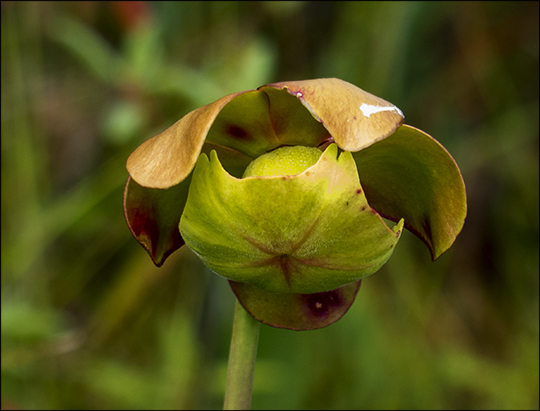
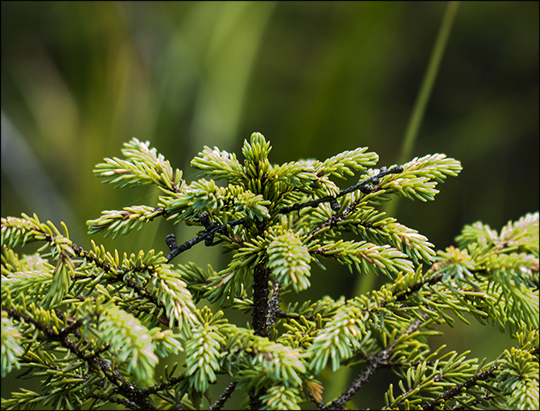
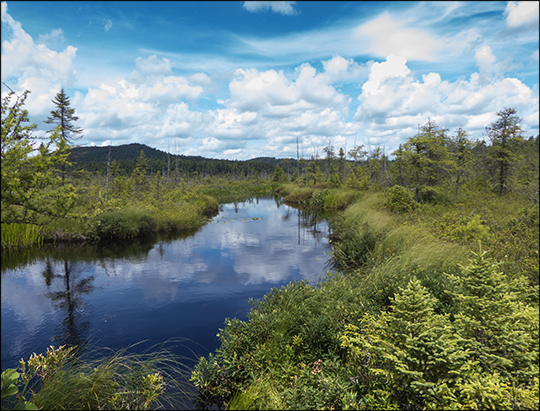
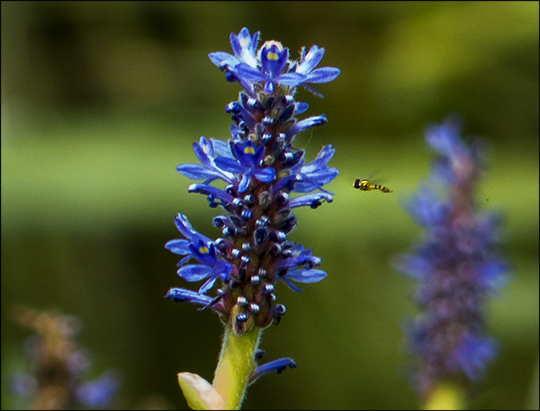
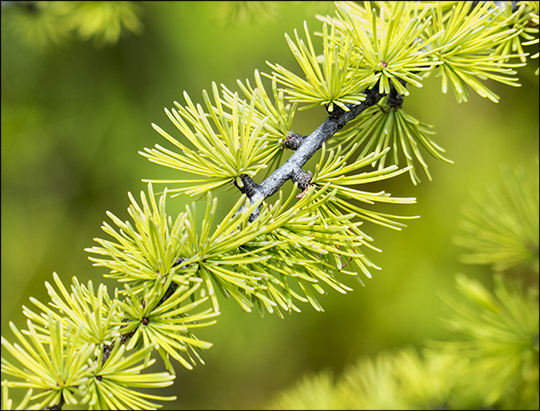

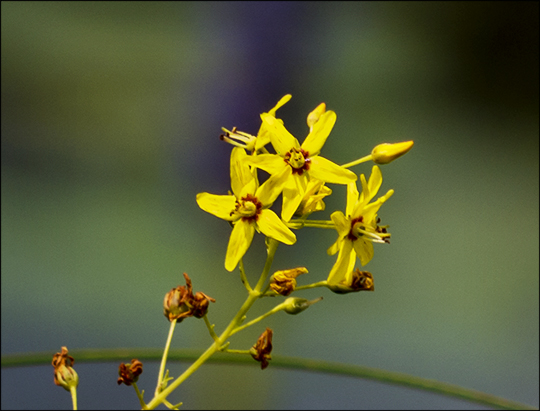
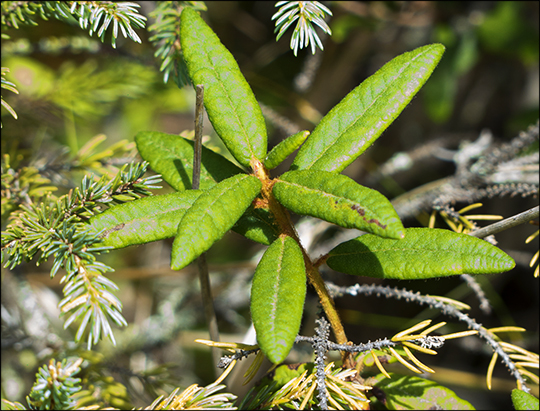


On 2 August 2013, VIC naturalist Brian McAllister led a nature walk focusing on Adirondack bogs. The walk took us to the boardwalk section of the Boreal Life Trail. Bogs and other wetlands represent about 15% of the habitat in the Adirondack Park; the remaining habitat consists of mixed hardwood/conifer forest, featuring a mix of deciduous trees (such as Sugar Maple and Paper Birch) and conifers (such as Balsam Fir, Red Spruce, and White Pine).
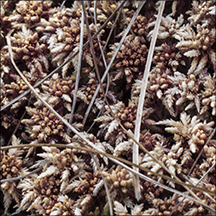 Bogs are wetlands dominated by sphagnum
mosses and sedges, as well as shrubs and evergreen trees rooted in deep
peat. The Boreal Life Trail features a lengthy boardwalk across Barnum Bog, the main bog habitat at the Paul Smiths VIC. Like other Adirondack bogs, Barnum Bog is a nutrient-poor acidic wetland. It started out a a pond or small lake which gradually filled in with sphagnum moss, eventually forming a mat four to six feet thick. Most bogs are isolated from the flow of surface waters and rely on rain for most of their water supply. Barnum Bog differs from most other bogs in the Adirondack Park, because it has Barnum Brook flowing through it. As a result, visitors to the bog can observe plant species growing in or on the margins of the brook, such as Pickerelweed, Swamp Candles, and Yellow Pond Lily, which are typical of marsh environments.
Bogs are wetlands dominated by sphagnum
mosses and sedges, as well as shrubs and evergreen trees rooted in deep
peat. The Boreal Life Trail features a lengthy boardwalk across Barnum Bog, the main bog habitat at the Paul Smiths VIC. Like other Adirondack bogs, Barnum Bog is a nutrient-poor acidic wetland. It started out a a pond or small lake which gradually filled in with sphagnum moss, eventually forming a mat four to six feet thick. Most bogs are isolated from the flow of surface waters and rely on rain for most of their water supply. Barnum Bog differs from most other bogs in the Adirondack Park, because it has Barnum Brook flowing through it. As a result, visitors to the bog can observe plant species growing in or on the margins of the brook, such as Pickerelweed, Swamp Candles, and Yellow Pond Lily, which are typical of marsh environments.
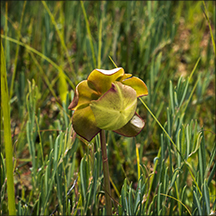 Most of Barnum Bog, however, resembles other Adirondack bogs in that the space represents a nutrient desert. As a result, the plants which thrive here are those which have evolved solutions to the problem of lack of nutrients, particularly nitrogen. We observed several plant species that have adapted to the harsh bog environment, including the Roundleaf Sundew and the Pitcher
Plant. These plants carry
on photosynthesis like other green plants, but supplement their
nutrition by capturing and digesting small insects. The Pitcher
Plant, for instance, has tubular leaves surrounding the base
of the plant. Insects enter the mouth of the plant and are trapped
by the hairs. They then drown in the leaf fluid and are digested
by enzymes and bacteria. The nutrients absorbed from the insects
supplement the nutrients absorbed by the roots. Sundews capture prey with sticky jewel-like tentacles that attract and then curl around their victims.
Most of Barnum Bog, however, resembles other Adirondack bogs in that the space represents a nutrient desert. As a result, the plants which thrive here are those which have evolved solutions to the problem of lack of nutrients, particularly nitrogen. We observed several plant species that have adapted to the harsh bog environment, including the Roundleaf Sundew and the Pitcher
Plant. These plants carry
on photosynthesis like other green plants, but supplement their
nutrition by capturing and digesting small insects. The Pitcher
Plant, for instance, has tubular leaves surrounding the base
of the plant. Insects enter the mouth of the plant and are trapped
by the hairs. They then drown in the leaf fluid and are digested
by enzymes and bacteria. The nutrients absorbed from the insects
supplement the nutrients absorbed by the roots. Sundews capture prey with sticky jewel-like tentacles that attract and then curl around their victims.
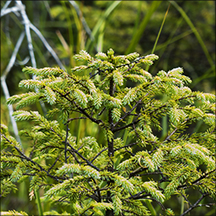 We also identified and discussed other plant life on the bog. Shrubs
include evergreen members of the heath family,
including Sheep
Laurel, Bog
Laurel, Cranberry, Bog Rosemary, and Labrador
Tea. They are well suited to bog life because they have leaves which retard evaporation through such adaptations as waxy coatings, rolled edges and fuzzy undersides. Barnum Bog also hosts a number of small
trees, including Tamaracks and Black Spruce. Tamaracks,
also known as the Eastern Larch or American Larch, are coniferous
trees which turn a golden yellow in fall before shedding their
needles. The trees in the bog, as in other bogs, are small because
the harsh environment causes them to grow very slowly, so a tree
only a few feet high may be quite old. We identified one tree only five or six feet tall which was probably 80 to 90 years old. This phenomenon is similar to that on mountain tops in the Adirondack Mountains, where the harsh, windy environment produces stunted trees.
We also identified and discussed other plant life on the bog. Shrubs
include evergreen members of the heath family,
including Sheep
Laurel, Bog
Laurel, Cranberry, Bog Rosemary, and Labrador
Tea. They are well suited to bog life because they have leaves which retard evaporation through such adaptations as waxy coatings, rolled edges and fuzzy undersides. Barnum Bog also hosts a number of small
trees, including Tamaracks and Black Spruce. Tamaracks,
also known as the Eastern Larch or American Larch, are coniferous
trees which turn a golden yellow in fall before shedding their
needles. The trees in the bog, as in other bogs, are small because
the harsh environment causes them to grow very slowly, so a tree
only a few feet high may be quite old. We identified one tree only five or six feet tall which was probably 80 to 90 years old. This phenomenon is similar to that on mountain tops in the Adirondack Mountains, where the harsh, windy environment produces stunted trees.
